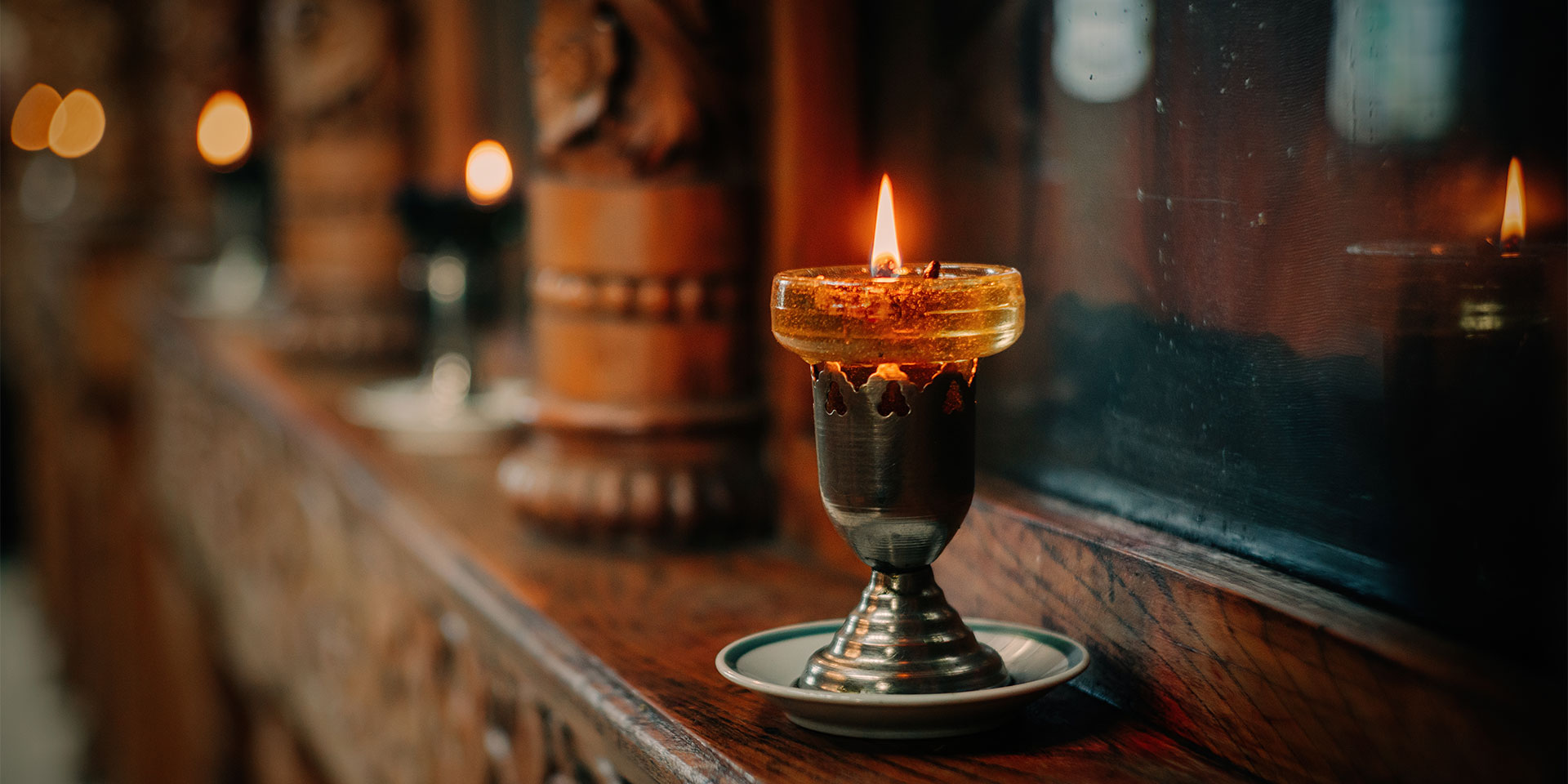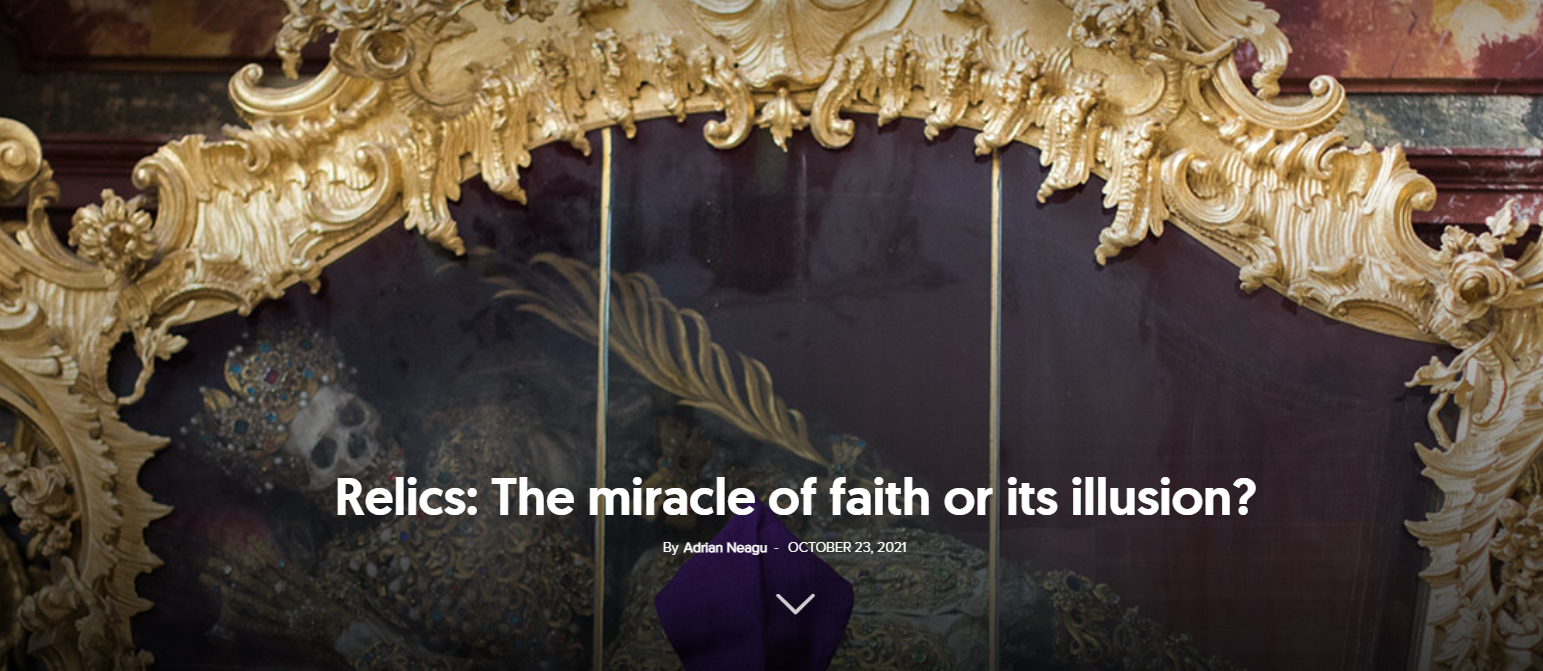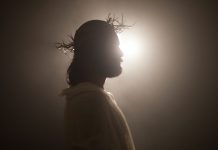For the crowds that gather around the casket containing the relics of Saint Paraskeva, everything is just dream and faith—amazingly much faith. But there is also something else. There is the hope of a miracle, a miracle that will cure diseases, cover debts, and make life happy.
The Romanian press is quite polarised regarding this phenomenon. Some count the miracles, while others count the money collected by the organisers. In all this multi-coloured uproar, there is one thing I haven’t heard about. Who was this pious Christian saint, how did she serve God, and why does she have such an important place in the Romanian collective imagination, even being called the “protector of Moldavia”?
This curiosity should not scare anyone. Jesus Christ himself called the disciples, and then the apostle Thomas, to approach Him after the resurrection, to touch His holy body, and to be convinced of the reality of His existence. That is precisely why we must be open to researching the truths, knowing their origin, and understanding their purpose. Without this openness to knowledge, Christianity is no better than pagan religions, in which mystery is a way of life, and blind faith the only way to salvation.
Some official biographical data
According to Orthodox tradition, Paraskeva was born in the first part of the 11th century into a wealthy family from Thrace, on the shore of the Sea of Marmara, near the modern city of Istanbul. Her name literally means “preparation” and in Greek it was also the name for Friday, the day of preparation. That is why she is also called Saint Friday, which many use alternately with that of Saint Paraskeva. At the age of ten, she was so impressed by the words of the Gospel that she distributed her clothes to the poor, to her own joy and her parents’ despair.
After only a few years she ran away from home to dedicate herself to monastic life and stopped first in Constantinople. (According to other storytellers, however, her parents were people of exemplary faith, of a rarely seen generosity, who planted in the souls of their children the same Christian way of life. It is said they encouraged Paraskeva’s brother to become a monk, and only after their death did the young woman supposedly leave for the monastery.[1])
Because her parents followed her from town to town, Paraskeva went to the Heraclea monastery, where she stayed for five years. From there she left for the Holy Land and, after visiting Jerusalem, she stayed at a nunnery in the Judean Desert, where she led a life of very severe asceticism, carefully preparing her soul for “the judgement that was to come.”
This expectation of heavenly judgement and of the meeting with her beloved Saviour gave birth to hymns of glory on her lips and tears of joy in her eyes—an expectation that should not be ignored by those who honour her life today. This is the same expectation that has animated the walk of all of God’s faithful children from all ages.
At the age of 25, following a dream, she returned to Constantinople, and from there she went to Epivat, the town where she was born, and shortly after, without being recognized by anyone, she died anonymously. Her grave was to be discovered only much later, following a dream of the local monk, and the body, untouched by decay—as tradition says—exhumed and venerated.
In 1641, the ruler of Moldavia, Vasile Lupu, asked patriarch Parthenius I for the saint’s relics, in order to place them in the new cathedral he had built. Parthenius was happy to offer them to him, especially since, in exchange for them, Vasile Lupu faithfully paid all the debts to the Ecumenical Patriarchate of Constantinople and offered additional rich gifts.[2]
On December 26, 1888, the chapel of the Three Holy Hierarchs Monastery in Iassy was almost completely destroyed by fire. However, tradition assures us that the bones of Saint Paraskeva miraculously remained untouched. Although her definitive canonical recognition, in the entire Romanian Patriarchate, took place in 1955, Romanian churches dedicated to Saint Friday could be found in many parts of the country ever since the 15th century. Her name appears in different forms in the Balkan area, being also known as Petka, Paraskeva of Tarnovo, Paraskeva the Young, or Saint Friday.
Controversies and unknowns
The first testimony about the life of Saint Paraskeva comes from the deacon Vasilisc, who wrote a book at the request of the ecumenical patriarch Nicholas IV, around the middle of the 12th century—that is, a century after the period when it is assumed that Paraskeva lived. The next work, and perhaps the most important one, is that of the great patriarch Euthymius of Tarnovo, who, around the middle of the 14th century, gathered information about the life and miracles performed by the relics of the young nun who had lived three centuries before.
Inspired by the work of Euthymius, metropolitan Varlaam of Moldavia, in his 1643 Cazania (the title given to a collection of sermons), also relates a history of Saint Friday, whose bones were already in the Church of the Three Holy Hierarchs in Iassy. The book appeared two years after Vasile Lupu received the gift of the Patriarchate of Constantinople. It’s hard to say how much of these testimonies is history and how much is myth. For this reason, historians prefer to talk about the “tradition” or “legend” of Saint Paraskeva.
The name Saint Friday has strong pre-Christian connotations, and the distinction between Saint Friday of Tarnovo and Saint Friday of Russia, or other such “saints” found in the rich traditions of Russia and the Balkans, is still a subject of controversy among specialists. For most of them, there seems to be a connection.
As in the case of other Christian holidays with roots in the pagan world, the church tried to replace the old heroes with Christian figures with authority, who would gradually take over the symbolic load of the former ones and direct people’s attention from the old gods to the new form of worship. The great celebration of Christmas is perhaps the most famous example of this.
Ivan Evseev, former professor of semiotics and symbols from Timișoara, says in his dictionary of symbols: “The patron saint of Friday, in the people’s calendar, is Saint Friday, in whose person the features of an ancient divinity of nature, elements of the cult of the Mother of Jesus and of Saint Paraskeva come together… This pious saint was born in Thrace on October 14 (the season of sowing winter wheat and picking fruit) and died on July 24—the time of grain harvest. The cult of the saint includes agrarian elements and rituals related to the sanctification of water, attesting to her character as the true Alma Mater.”[3]
Even Father Mircea Păcurariu, the esteemed historian of Romanian Orthodoxy, admits that Saint Paraskeva “is popularly known as ‘Saint Friday’ or ‘Good Friday.’” The ecclesiastical council of Stoglav, in 1551, which decided the daily life of Orthodox believers in the Tsarist Empire, but especially that of the priests and the monks, denounced the celebration of Saint Paraskeva as having roots in the worship of pagan deities of fate.
“Only after many generations did Paraskeva’s pagan influence begin to wane, giving the advantage to the Orthodox rite.”[4] In the same context, the author also states that “worship of Paraskeva was perhaps the most entrenched pagan tradition of all and it proved the most difficult for the Orthodox Church to eradicate, particularly among the peasantry.”[5]
Another surprising thing is that this saint (whose celebration is specific only to the Orthodox churches) is better known today for the miracles performed after her death than for the purity of her life, as would be expected if we were to judge only by the precedents registered by the Scriptures. In the Bible, all the great men of faith were left as an example, praised by God and useful to His people by what they did in life, and not for the deeds done after they died.
Even the bones of the prophet Elisha, which revived a dead man who was hastily thrown over them, were neither taken to Samaria or Jerusalem, nor exhumed and considered miraculous, and no feast was held in his honour nor in the honour of another Old Testament believer. Moreover, neither our Lord Jesus Christ nor the apostles indicated anything that could suggest we should transform the remains of the saints’ bodies into an object of worship or an occasion of pilgrimage. The Bible is clear about this: only God does miracles, and the grace lasts only as long as you live.
Epilogue
There was a great bustle in the narrow streets of a city in Asia Minor. Word had spread that the gods had descended among men. It was even rumoured that Jupiter himself, together with Mercury, the messenger of the gods, had stopped in their city to speak to them and to give them gifts. The priests prepared a feast as best they knew, brought bulls, and set off to welcome the guests whom they knew only from the stories of old.
The whole city had gathered to see the miracle, while the “gods” told a group of curious people about the land of the one true God, who came to earth to die for all people and who would return to take with Him all those who really desired to be with Him.
The procession led by the ordained priests arrived in front of the two men, but they, instead of receiving the worship of those pious people, jumped into their midst and prevented them from sacrificing the bulls, saying “We too are only human, like you” (Acts 14:8-11). Thus, Paul and Barnabas stopped the crowd from bringing them sacrifices. This was the same crowd that just a few days later would stone them and leave them for dead.
This story is thought-provoking. If what tradition tells us about Paraskeva and her devotion to God is true, it is likely that, if she lived today with the same longing to meet Jesus, and were to see the crowds gathered to kiss her garments, she would jump into their midst and would say the same words as the holy apostles: “People, I am just a person of the same nature as you!”
Adrian Neagu is the editorial director of Life and Health Publishing House Romania and holds a PhD in History.




















